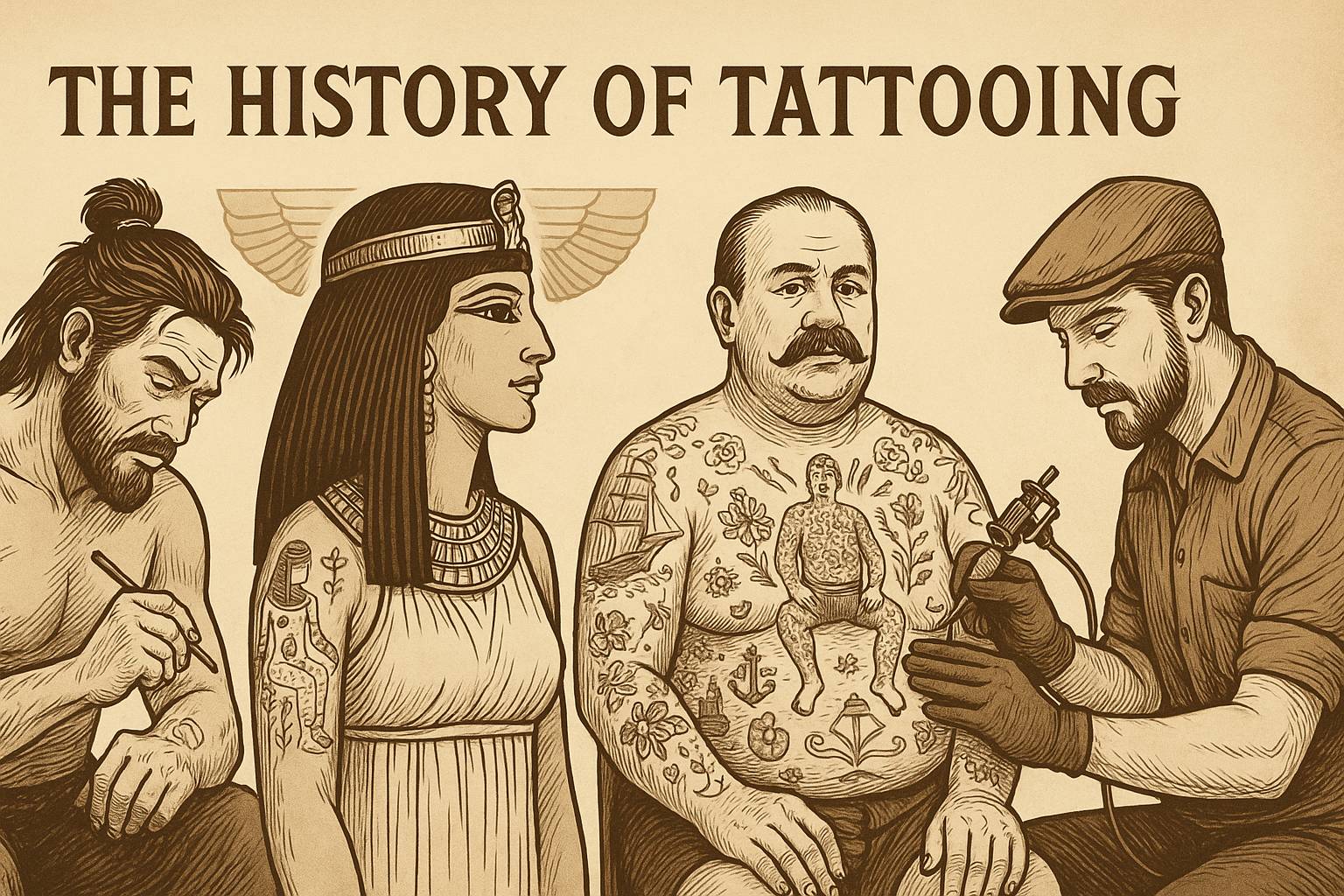The History of Tattooing: From Ancient Rituals to Modern Ink
Tattoos have come a long way—from sacred symbols etched with sharpened bones to full-sleeve masterpieces done with precision machines. But tattooing isn’t a modern trend—it’s one of the oldest art forms in human history. Let’s take a quick journey through the fascinating evolution of tattooing.
Ancient Ink: Tattoos as Ritual and Identity
Tattoos date back thousands of years. The oldest preserved tattoos were found on Ötzi the Iceman, a 5,300-year-old mummy discovered in the Alps. His body featured over 60 simple tattoos, likely for therapeutic or spiritual purposes.
In ancient Egypt, tattoos were worn mostly by women—possibly as symbols of protection, fertility, or status. Meanwhile, Polynesian cultures developed highly detailed and meaningful tattoo traditions, giving us the word “tattoo” itself (from the Tahitian word tatau).
In Japan, tattoos began as spiritual markings but evolved into a full-blown art form. Despite periods of stigma, Japanese irezumi remains one of the most recognized and respected tattoo styles in the world.
Tattoos in the Western World: From Punishment to Pride
In Ancient Rome, tattoos were used to mark criminals and slaves—a far cry from today’s self-expression. But in the 1700s, tattooing resurfaced in Western culture thanks to sailors traveling to Polynesia and Southeast Asia. Tattoos became part of seafaring identity—showing bravery, travel stories, or superstitions.
By the 19th century, tattooing spread across Europe and North America. In Victorian England, tattoos became surprisingly trendy among aristocrats—even royalty! King Edward VII had a Jerusalem cross tattoo, and the trend quietly spread through upper society.
The Machine Era: Tattooing Goes Mainstream
In 1891, New York tattooist Samuel O’Reilly patented the first electric tattoo machine, adapting it from Thomas Edison’s autographic printer. This made tattooing faster, cleaner, and more accessible.
Still, for much of the 20th century, tattoos in the West were linked with rebellion, counterculture, or working-class life. Think soldiers, bikers, and punks. But by the 1990s and 2000s, perceptions shifted. Tattooing became more accepted, even celebrated—driven by reality shows, social media, and a growing respect for the art itself.
Modern Tattooing: Art, Expression, and Innovation
Today, tattooing is a full-blown industry. From hand-poked micro tattoos to full-back realism pieces, there’s a style for everyone. Artists specialize in everything from neo-traditional to blackwork, fine line, Japanese, biomech, and surrealism.
Tattoo studios are cleaner, more regulated, and more artistic than ever. In many places, tattooing is recognized as both an art and a profession.
Why the History of Tattoos Still Matters
Tattoos have always been more than skin deep. They’ve marked identity, belief, status, pain, memory, and rebellion.
Whether you’re getting your first tattoo or adding to a full sleeve, knowing the roots of tattoo culture gives more meaning to the ink you wear.



Thinking of Getting Inked?
At RetrINK, we honour the history of tattooing while pushing creative boundaries. Whether it’s a timeless black line or a bold full-colour piece, we’re here to make your mark unforgettable. Become a part of this fantastic body decorative history and book in with us.
📍 Book a consultation on WhatsApp or Messenger / visit us on Instagram / Visit our Gallery to see our portfolio.


